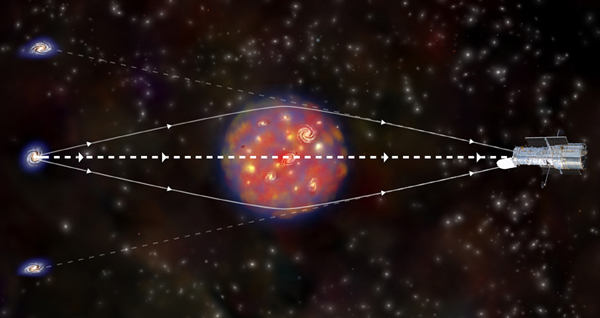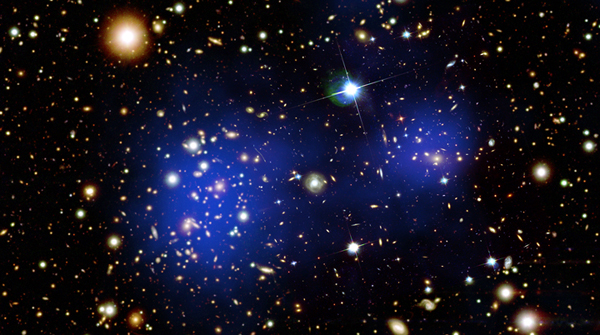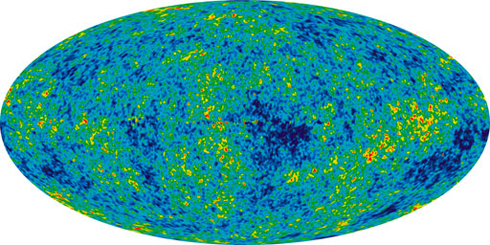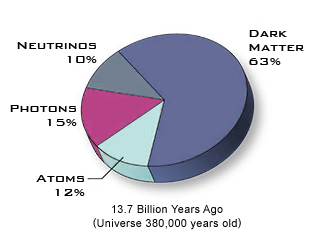Gravitational Lensing by Clusters of Galaxies
Yet another independent line of evidence points to the dominance of dark matter in galaxy clusters. According to Einstein's theory of general relativity, space is curved in the vicinity of strong gravitational fields.
One consequence of the warping of space by gravity is that the path of light from background galaxies is bent when it passes near a cluster, in much the same way that a glass lens will bend light. The images of the galaxies are distorted by this "gravitational lensing" effect, by an amount that depends on the mass of the cluster. This method gives estimates for the amount of dark matter in galaxy clusters that is in good agreement with X-ray observations.

Strong gravitational lensing: Bending of light from background galaxies by a massive
galaxy cluster can be used to estimate the mass of the cluster. (Illustration: NASA/CXC/M.Weiss)

Weak gravitational lensing of background galaxies produces distorted images that can be analyzed
to give an estimate of the mass of a cluster. Pictured: The Bullet Cluster (1E 0657-56).
Fluctuations in the Cosmic Microwave Background Radiation
The cosmic microwave background radiation reveals what the universe was like when it was only a few hundred thousand years old, long before galaxies and clusters of galaxies were formed. At this time the universe was an expanding gas composed primarily of protons, electrons, photons, neutrinos, and dark matter.
The intensity of the cosmic microwave background radiation is very nearly the same in all directions, but not quite. Small variations of a fraction of a percent have been detected. These variations, or fluctuations, are due to clumps of matter that are either hotter or cooler than the average.
The rate at which clumps would grow in a hot, expanding gas can be calculated for different mixtures of photons, protons, neutrinos and dark matter. Comparison of such calculations with observations of the microwave background (especially with the Wilkinson Microwave Anisotropy Probe, or WMAP) and other data indicate that the universe contains about 6 times more dark matter than normal matter.

The amount of dark matter in the universe before galaxies formed can be determined from a study of
the fluctuations (bright blue and red areas) in the cosmic microwave background radiation. (Credit: NASA/WMAP)
Many different lines of evidence suggest that the mass of dark matter in galaxies, clusters of galaxies, and the universe as a whole is about 5 or 6 times greater than the mass of ordinary baryonic matter such as the protons and neutrons.

This chart represents the census of the Universe only 380,000 years after the Big Bang.
(Illustration: NASA/CXC/M.Weiss)





